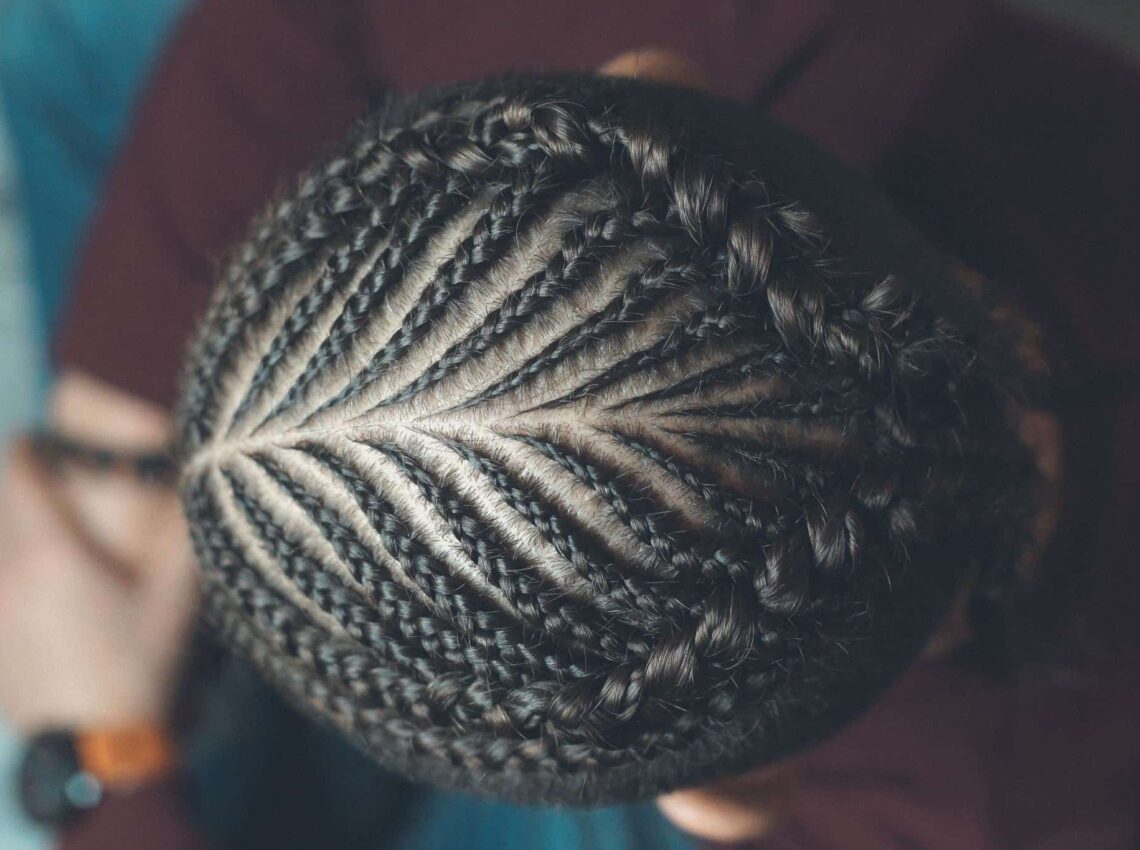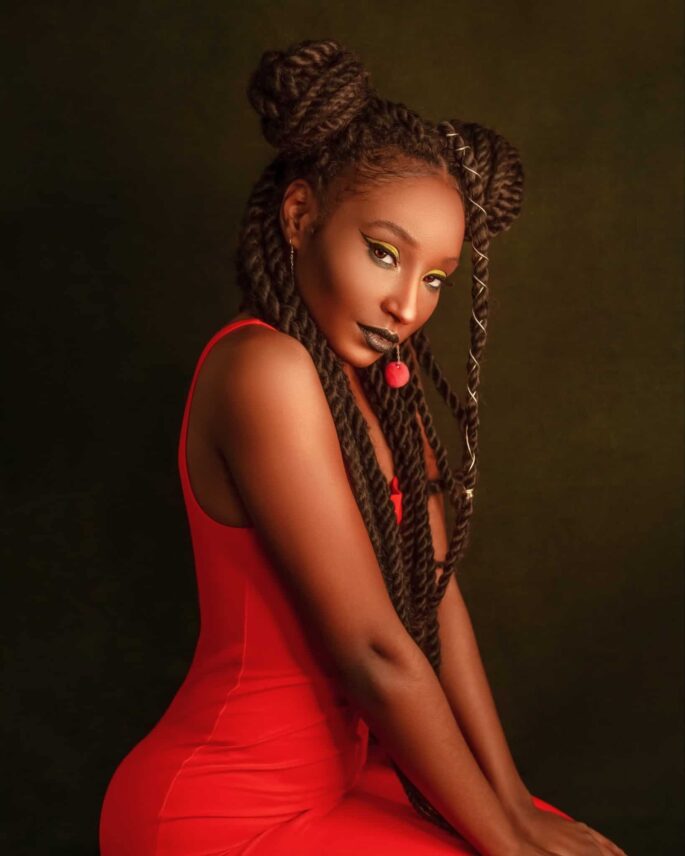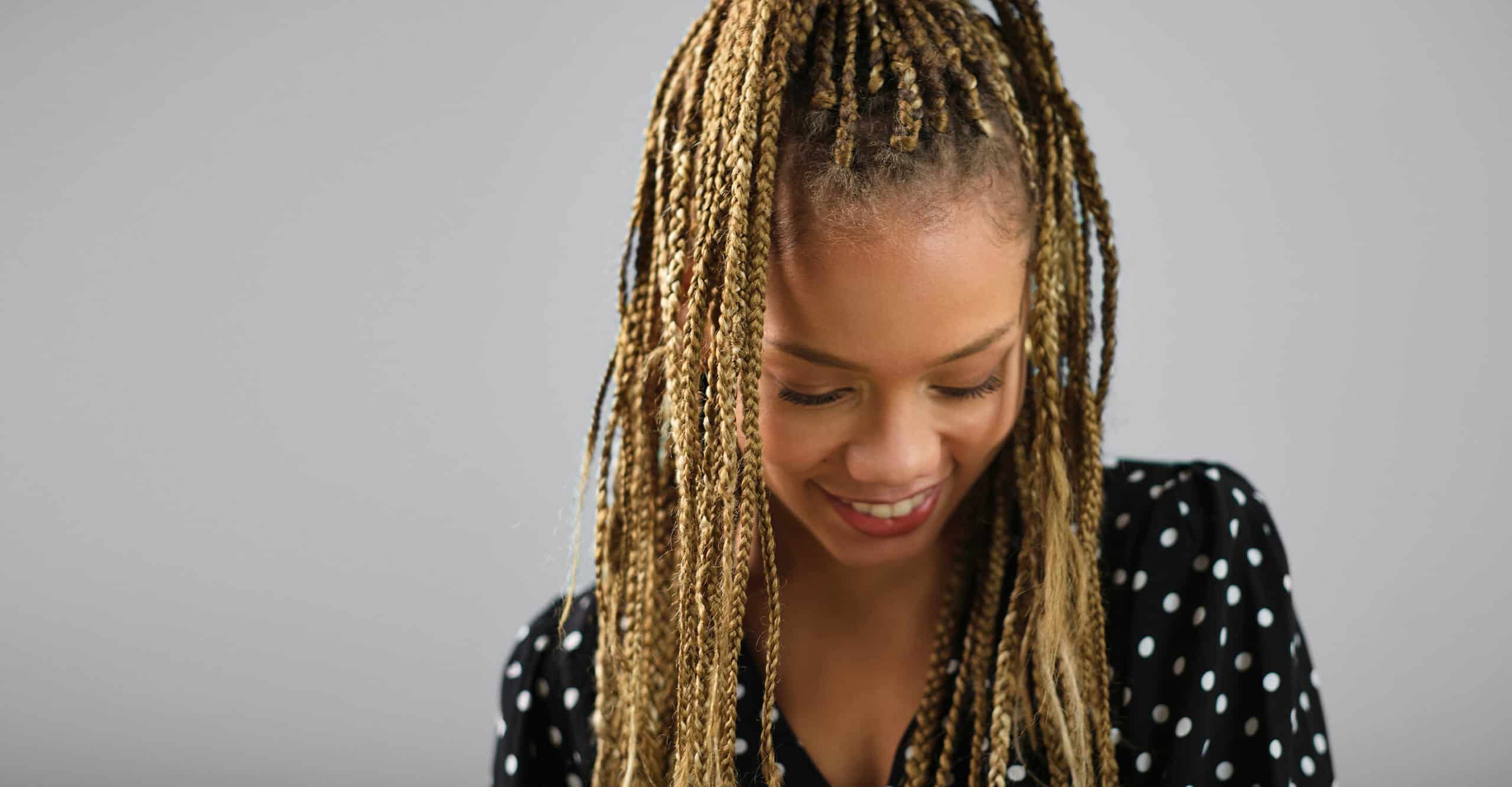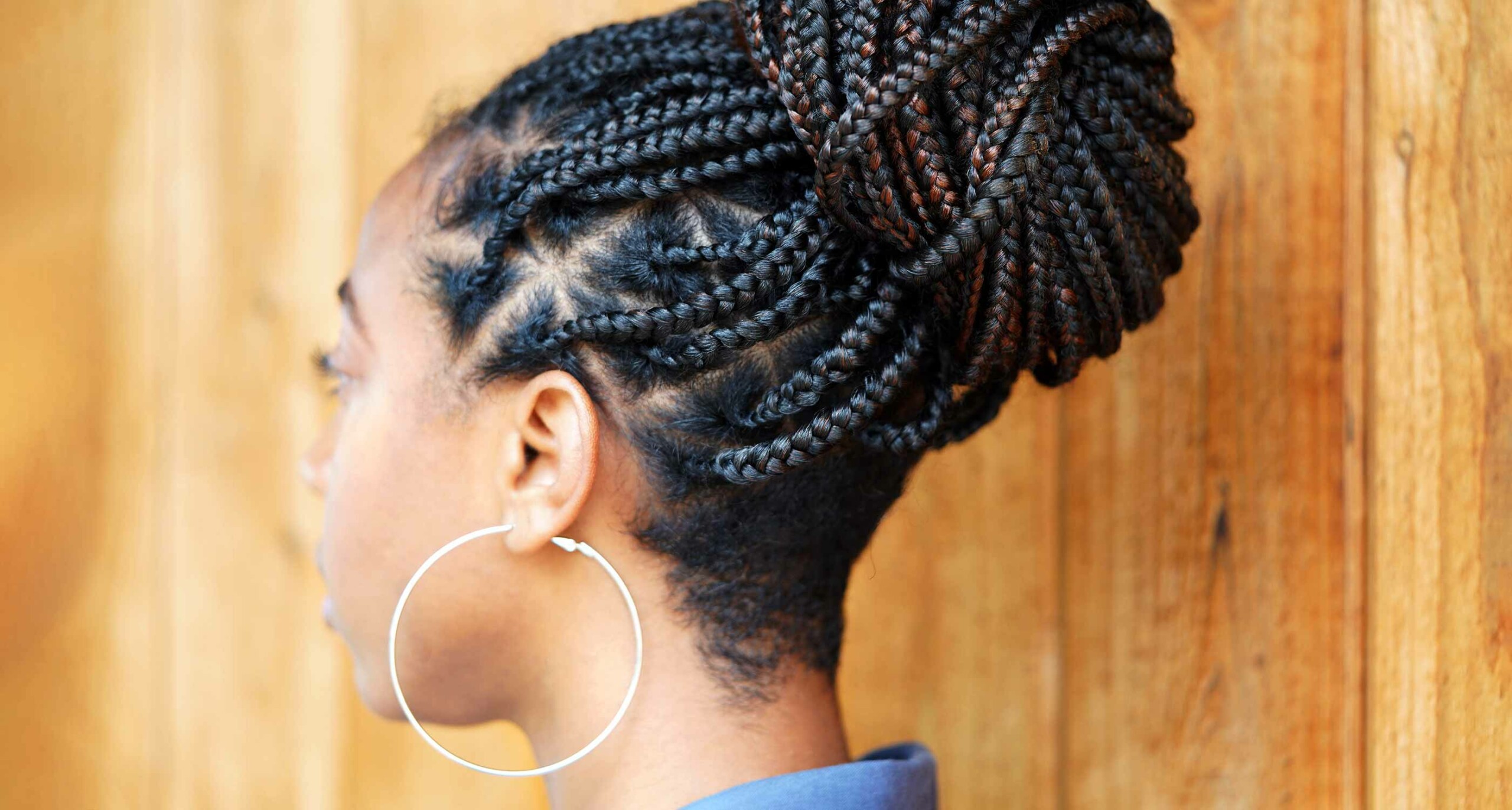Tribal Braids: How to Achieve This Unique Look

Braids aren’t just a stunning way to style your hair — they’re also a piece of living history. Hair braiding is rooted in African culture, with many styles tracing back thousands of years.
Today, when we refer to tribal braids, we’re talking about braided styles organized into designs or patterns, sometimes including beads, rings, or other accessories. There are scores of beautiful, intricate hairstyles that belong to the category of tribal braids.
Hair braiding is a true art form that’s both practical and culturally significant. Likewise, perfecting the technique takes considerable time and training.
In this blog, we’ll dive into the history of tribal braids, the process of installing them (including the cost), and the best way to maintain your look. We’ll also share our tips for finding a hairstylist or hair salon using an online booking app that can meet your unique needs. Let’s get started.
The History of Tribal Braids
What are tribal braids? The practice of hair braiding reaches back thousands of years to as early as 3,500 BC.
In many African tribes, the style of braiding identified members of a specific group. Braid patterns indicated an individual’s:
- Age
- Tribe
- Marital Status
- Power
- Religion
- Wealth
The style in which hair was braided was part of a language system and was even used to communicate with other tribes.
During the Atlantic slave trade era, hair braiding took on another meaning, becoming a way to send important messages that could help enslaved people reach safety and freedom.
Today, tribal braids are a way to acknowledge this powerful heritage and show off your unique style. As an added bonus, they can also protect your hair from the elements and last for several weeks. Before you start your search for the best hair braiding San Diego, Atlanta, or even Washington D.C. offers, determine which style you would like to achieve next.
Popular Tribal Braid Styles

These days, tribal braids are some of the more popular braid styles out there. Ready to try out a new tribal-inspired ‘do? The first step is picking a specific style. There are endless varieties of tribal braids, yet some of the most popular today include:
- Fulani braids – This style typically includes a small braid down the center of the head from front to back. Then, additional braids are added from back to front on either side of the head.
- Ghana braids – This is a style of cornrows that requires a different hair feeding technique. Instead of feeding the hair from under the braid, it’s fed over the braid. This creates a unique ring shape on top of the braids.
- Stitch braids – Stitch braiding is a style that evolved from Ghana braids. The hair is divided into five to seven thick sections with thin sections between each. Both the thick and thin sections are braiding, creating a mesmerizing alternating pattern.
- Box braids – One of the most versatile styles of braid, the box braid has numerous variations. It can be done using natural hair or by adding extensions. When learning how to style box braids, the first step is to part the hair into sections—whether boxes, triangles, or other shapes—and then braid.
- Goddess braids – This style braids the hair close to the scalp. The finished product has thicker braids that are raised from the head. They don’t last as long as some of the other popular styles but are very versatile.
- Two-layer braids – To achieve this look, your hair will first be divided into horizontal sections. Each section gets braided in a different pattern with extensions being fed in as you go.
These are just a few of the many unique styles of tribal braids you can have installed in your hair. And if you have thin hair or a sensitive scalp, you can still try tribal braids with knotless braid extensions. For more inspiration, talk to an experienced stylist and be sure to ask if they have pictures showcasing their work across various braid types!
How to Do Tribal Braids
The time you spend in the chair depends on your hair’s length, your stylist’s speed, and your chosen braid design. Just like other types of braids for Black women and men, each tribal braid style has its own quirks and complexities. However, while the specifics vary, the basic process is the same.
Here’s our five-step how-to tribal braid process:
Step 1: Preparation
First, wash and condition your hair. Whether your go-to hair care product is low-poo, no-poo, or co-wash, the goal is hydration.
Next, reach for the leave-in conditioner to help with the detangling process. Use your fingers or a comb to work through your wet strands, tackling any knots. Depending on the condition of your hair, your stylist may recommend using a natural hair treatment for pre-braid prep.
Finally, using hair oil to help your hair retain moisture and prevent frizzing.
Step 2: Parting
The method your stylist uses to part your hair will depend on the type of braid you’re going with.
This step is also where you can incorporate interesting variations into your style. From unique shapes for box braids to side-parts to asymmetrical approaches, the only limits are your stylist’s skill and creativity.
Step 3: Sectioning
Each section created during the parting step will be divided into three smaller segments.
Step 4: Braiding
Once your hair is divided into segments, it’s time to begin braiding. The pattern your stylist uses will vary, as will the thickness of the braid. If you’re using hair extensions, they’ll be incorporated during this step, too.
Step 5: Securing
After the desired length of the braid is reached, your stylist will secure the bottom with a rubber band or use another similar method. Then, they’ll repeat the process with the remaining hair sections.
How Much Do Tribal Braids Cost?
The cost for tribal braids will vary depending on:
- Hair length
- Style of braid
- Complexity
- Accessories
- Your location
- Availability of stylists
Let’s look at a few examples to see how the price can vary.
- You’ve just found one of the best stylists for tribal braids Atlanta has to offer. Your request? Box braids on medium-length hair. The price? $120 for up to 240 minutes. As you can see, the price will likely include braiding for up to four hours. If it takes longer to braid your hair, the cost would be higher.
- You’ve found a promising stylist for tribal braids, Chicago-style. Your request? Stitch braids on medium-length hair. The price? $80 for up to 180 minutes. In this example, we have a different location and style. The price is lower, but the time allotted is also less. If it takes longer to braid your hair, you’ll pay more.

Maintaining Tribal Braids
Once you’ve invested in tribal braids, you want them to last. You may be wondering, how often should you wash your natural hair when in braids?
Most stylists recommend washing long-lasting braid styles every three to four weeks. After shampooing, you should use a conditioner, let it sit in your hair for a few minutes, and then rinse thoroughly.
You can then either let your hair air dry or use a hooded dryer to speed the process. Once your hair is completely dry, apply hair sheen or oil to keep your hair looking shiny and healthy.
Are Tribal Braids the Right Hairstyle for You?
It can be tough to decide which braided style is the best choice for your hair. With so many gorgeous styles and types of braids for Black hair to pick from, we understand the difficulty. Here are some things you should consider when determining if tribal braids are the right style for you.
Length
The minimum length for braiding is just under two inches — whether or not you’re adding extensions.
- Keep in mind that you shouldn’t add very long extensions to short hair. Their heavy weight will put too much pressure on your natural hair.
- If your hair is longer than four inches, then you can use longer extensions without problems.
Therefore, you can achieve the look of tribal braids with most hair lengths over two inches. The only difference between starting with shorter versus longer hair will be the length of the finished braids due to the limitations on extending very short hair.
Hair Texture
The thicker your hair, the easier it’ll be to braid. More texture means your hair will hold the style better. If you are rocking a natural curly hairstyle, this is ideal for braiding. If your hair is very fine, it’ll be more slippery, and you may have a bit more difficulty holding the braids in.
Timing
When you’re planning a tribal braid style for your hair, there are two factors to consider involving time. The first is how long it will take to finish the style and the second is how long your braids will last.
Braiding Time
The time it takes to install the braids in your hair depends on:
- Hair length
- Complexity of the style
- Experience of the stylist
It can take anywhere from three to six hours to complete your look. Furthermore, many stylists are very busy, so you’ll need to plan ahead and be prepared for your appointment to be several weeks out.
Make sure you clear enough time in your schedule to clean and dry your hair before your braiding appointment as well.
Braid Lifespan
Typically, tribal braids can last for between four to six weeks. Thicker braids won’t last quite as long as thinner ones. Taking care of your braids properly is the best way to preserve them. Some of our favorite tips for long-lasting braids include:
- Protect them at night with silk or satin scarves or pillowcases
- Keep your scalp moisturized
- Avoid mineral oils
- Wash them as recommended by your stylist
- Avoid pulling your hair back or up too frequently
- Don’t wait too long before taking them out
By following these pieces of advice, your braids should last for up to six weeks. Don’t forget to search for qualified stylists that will help refresh your hairstyle before the anticipated expiration date!
Find Your Perfect Stylist in Atlanta and Beyond
Tribal braids are a stunning way to express yourself and showcase your heritage. With countless style possibilities, you’re sure to find the perfect fit for your hair type. Whether you’re in Chicago, San Francisco, or Atlanta, tribal braids stylists with the experience to make your braid dreams a reality are listed on StyleSeat. We provide answers to the question of how to find a good hair braider.
If you haven’t decided on a hairstyle, check out our blog to find more information on various hairstyles and other hair-related information. You might be wondering what knotless braids are, how faux locs work, etc. Visit our blog to have more of your questions answered!
We make it easy to find the perfect match for your hair styling needs. You can see services, prices, and even book an appointment from the comfort of your home. Find a stylist today and get ready to take your ‘do to a whole new level.
Sources:
Byrdie. The Fascinating History of Braids You Never Knew About. https://www.byrdie.com/history-of-braids
Amplify Africa. The Rich History of Braids. https://www.amplifyafrica.org/post/the-rich-history-of-braids
Ebena. Fulani Braids. https://ebena.net/style/tribal-fulani-braids/6685
Ebena. Ghana Braids. https://ebena.net/style/ghana-braids/914
Ebena. Box Braids. https://ebena.net/style/box-braids/43
Onchek. 6 Popular Braiding Styles and Their True Origin. https://www.onchek.com/theinsight/6-popular-braiding-styles-their-true-origin/
Ebena. Stitch Braids. https://ebena.net/style/stitch-braids/84
The Trend Spotter. 25 Hottest Tribal Braids to Copy. https://www.thetrendspotter.net/tribal-braids/
Bukola Braiding. Simple Steps to Hair Braiding. http://www.bukolabraiding.com/wp-content/uploads/2012/10/Simple-Steps-to-Hair-Braiding.doc.pdf
Essence. How to Wash Braids. https://www.essence.com/hair/braids/how-to-wash-braids/
Outsons. How Long Does Your Hair Have to Be to Braid? https://outsons.com/how-long-does-your-hair-have-to-be-to-braid-for-guys/
Stylist. How to Refresh Your Braids: Simple Tips to Make Your Braided Style Last Longer. https://www.stylist.co.uk/beauty/braids-how-to-maintain-keep-in-longer-tight-fresh-braids-twists/330285
Thirsty Roots. 7 Tips for Maintaining Braids or Twists. https://thirstyroots.com/maintaining-braids.html


